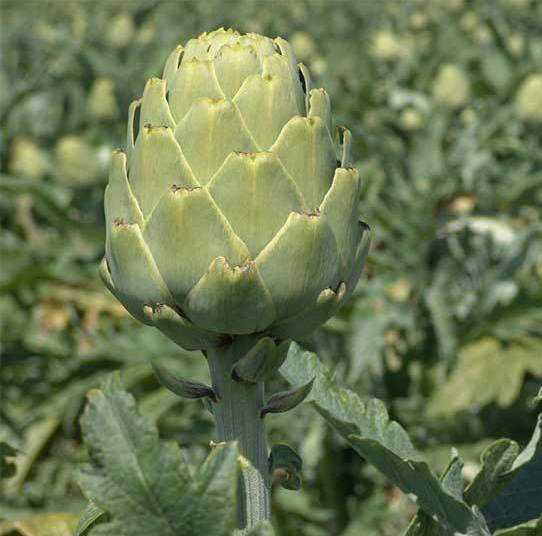How to grow artichokes – discover these edible and ornamental historic plants
Both delicious and beautiful, artichokes can be a fantastic addition to any backyard vegetable garden or flower bed
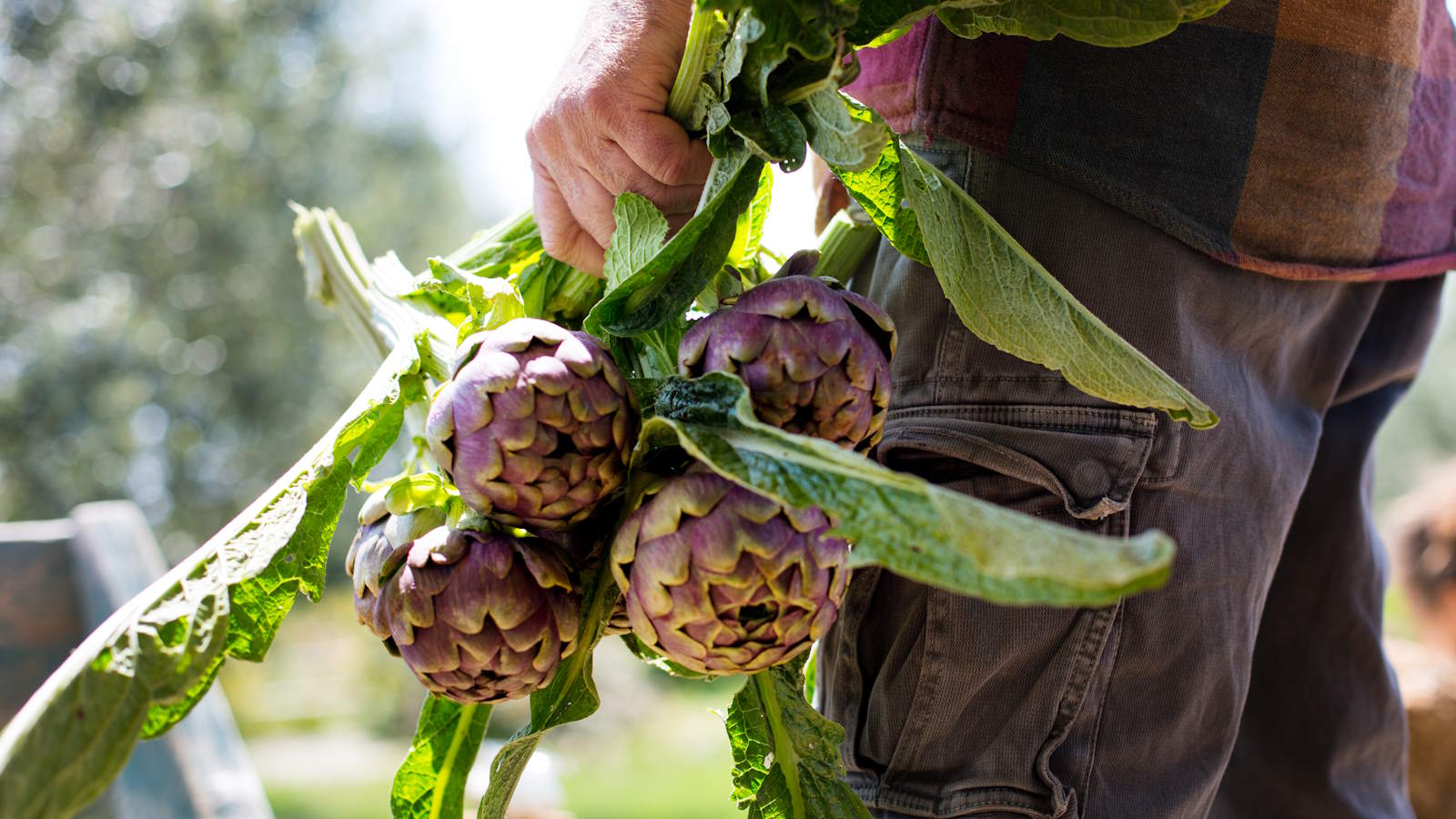

Artichokes are statuesque and ornamental plants, grown for their edible flower buds that develop each summer. They can be grown as perennials in warmer climates, but are treated as annuals in cooler locations.
Also commonly known as globe artichokes, they are a historic crop and a member of the thistle family. They are thought of as tricky plants to grow and can reach heights of up to six feet, but artichokes are worth considering growing as part of your vegetable garden ideas as one plant will produce up to 10 edible buds each season and can provide harvests for many years.
If you want to discover how to grow artichokes, this is our in-depth guide to everything you need to know. From starting the plants from seed and to picking the right location to plant, all the way through to harvesting artichoke heads at the absolute perfect time.

Artichokes are grown for their edible flower bud
How to plant and grow artichokes
Artichokes are perennial plants in US hardiness zones 7-11. However, the edible buds of most varieties of artichokes are not produced until the second year of the plant’s life. This means that artichokes are grown as an annual in colder climates - though there is a trick to get them to produce buds in the first year - or you need to overwinter your artichokes. How you are going to grow them, depending on your climate, will impact when you plant artichokes.
Young artichoke plants can be bought from nurseries, garden centers, or online retailers, while the plants can be grown from seed. There are lots of different types of artichoke to consider growing, which can come in different sizes, shapes, colors, and flavors.
Diane Kuthy, founder at How To Grow Everything, recommends artichoke varieties such as ‘Imperial Star’ and ‘Colorado’ as types that are best suited to being grown as annuals.
How to grow artichokes from seed
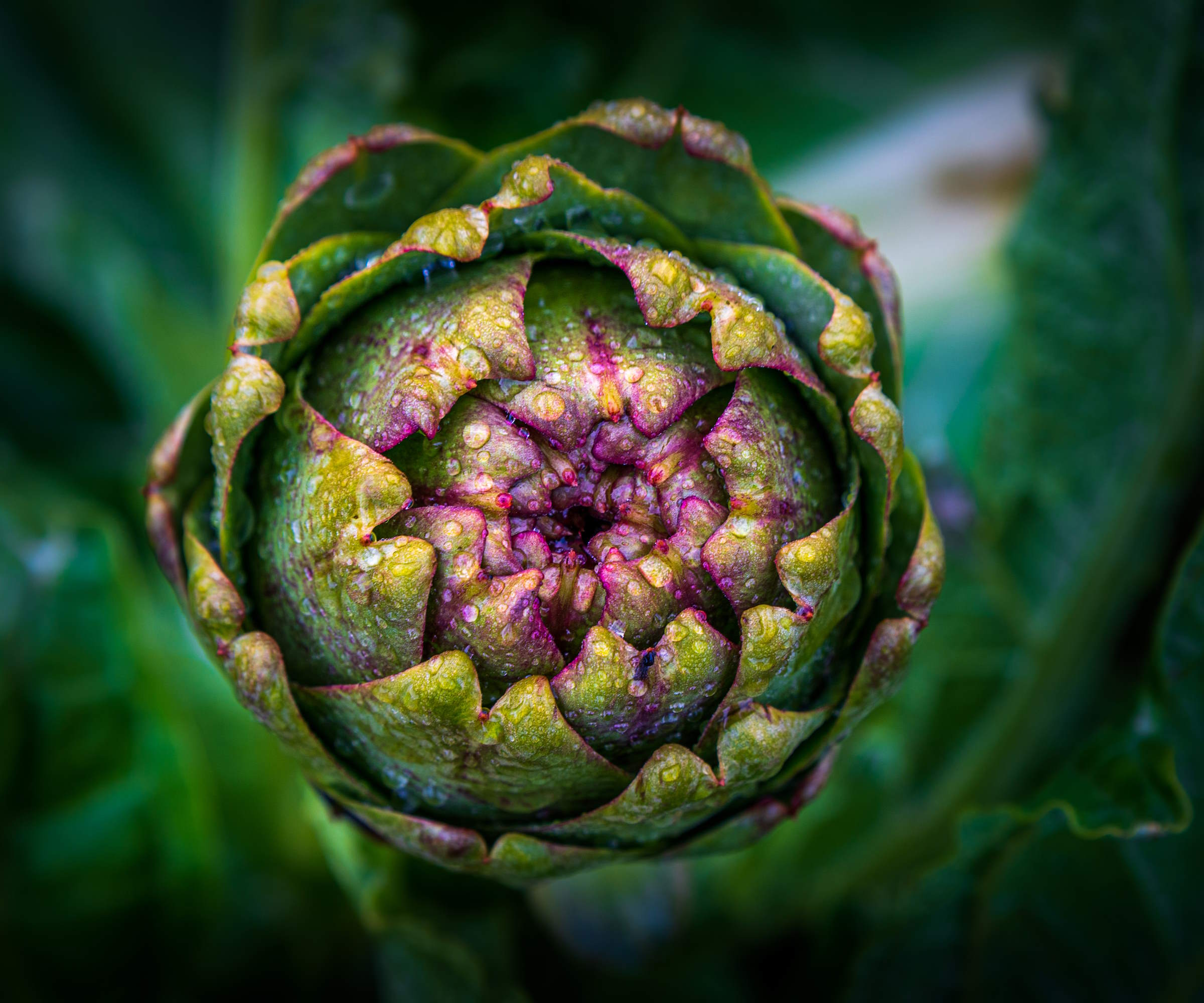
Artichokes can be encouraged to flower from seed in their first year
Growing artichokes from seed is cheaper than purchasing young plants, but does mean a longer growing season and you will benefit from starting artichoke seeds as early as possible if you are growing them as an annual.
Design expertise in your inbox – from inspiring decorating ideas and beautiful celebrity homes to practical gardening advice and shopping round-ups.
Start seeds as early as 10-12 weeks before the last frost date for your area. The best location to do this would be in a heated greenhouse, or in a heated propagator on a warm windowsill, as artichoke seeds want temperatures of 70-80°F for good germination.
Sow artichokes seeds into large modules or individual pots filled with a good potting soil designed to start seeds in, such as this natural seed starter mix available at Amazon. Keep the soil moist and the seedlings should appear within two weeks.
The young plants will require potting up and growing for longer indoors, until the time to transplant seedlings comes once the soil warms up to 60°F and the risk of frosts has passed.
Susan Mulvihill, author of The Vegetable Garden Problem Solver Handbook, explains how growers can use the ‘vernalization method’ to encourage artichokes to produce in their first year - which is vital for growers in areas where plants will not survive the winter.
‘Two weeks prior to starting the plants indoors from seed, put the seeds and a small amount of potting compost into a plastic bag and place it in the refrigerator,’ says Susan.
‘In two weeks, remove the seeds and plant them indoors as you normally would. Two weeks prior to transplanting the seedlings out into your garden, set them outdoors to subject them to cool (but not freezing) temperatures.’
‘These two simple steps - the vernalization treatment in the refrigerator coupled with the exposure to cool temperatures -- make the plants think they have already been through a winter. They should produce those lovely artichokes we all love to eat in that first year’
Growers in warmer hardiness zones, where plants can successfully overwinter, can start their seeds later indoors a few weeks before the last frost. The alternative is to direct sow artichoke seeds into the garden in early summer.

Susan Mulvihill is the author of 'The Vegetable Garden Problem Solver Handbook', available at Amazon, and gardens on 5 acres in Spokane, Washington State. She has also been writing garden columns for the Sunday edition of The Spokesman-Review newspaper for nearly 20 years.
Where and how to plant artichokes

Artichokes like to grow in lots of sun
Artichokes prefer to grow in a sunny spot in the kitchen garden, though they should not be restricted to just edible beds and can look striking as part of any flower bed in the backyard. They want warmth and lots of sun, but benefit from a sheltered spot and to be given plenty of space. Artichoke plants can grow 4-6 feet tall and spread around 3 feet, so do not want to be penned in too much.
The plants ideally want a soil type that is fertile and well-draining. Avoid planting artichokes in soil that sits waterlogged over winter, or in shady spots or frost pockets. Plants will appreciate the addition of lots of organic matter into the soil prior to planting. The addition of compost or well-rotted manure will add beneficial nutrients to the ground, as well as help with the structure and water-holding capacity of the soil.
When it comes to how to plant an artichoke, whether it is a young plant you purchased or one you grew yourself in a greenhouse, the process is simple. Make sure to harden off seedlings and young plants that have been started indoors to get them accustomed to life outdoors
It is then simply a case of gently squeezing the plant from the pot and putting it into a pre-dug hole that is slightly bigger than the root ball. Plant it at the height it was in the pot and firm down the soil, before giving it a good water. If there is a risk of any cold nights ahead, you can cover the plants with a frost cloth or cloche to keep it protected.
How to care for artichokes
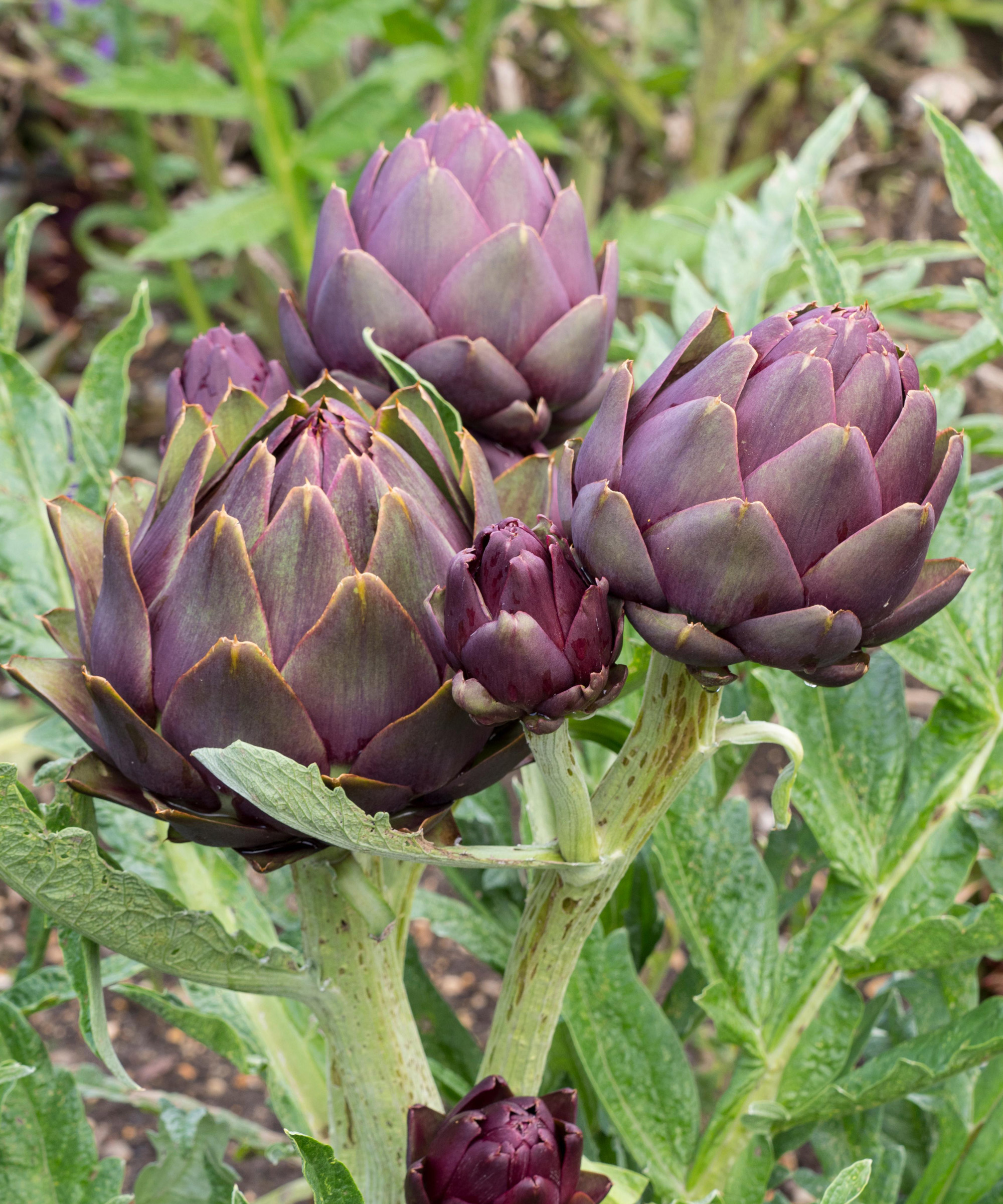
Artichokes are statuesque plants that can grow up to six feet in height
Artichokes are heavy feeders and need to be watered and fed well in their first year. The plants are drought tolerant vegetables once established, but even older artichokes will require additional watering during dry spells and especially once the flower buds are starting to form.
Diane Kuthy recommends that artichokes will require lots of feeding, even on top of any compost or other organic matter added to the soil prior to planting.
‘Be sure to fertilize your soil with compost and nitrogen every month during the growing season,’ she recommends. ‘This is especially true for gardeners growing artichokes as annuals to ensure that they get the most growth from their plants during their short growing seasons.’
A good fertilizer to add when growing artichokes would be an organic and balanced product that has a good level of nitrogen. One example of such a feed would be this all-purpose fertilizer available at Burpee. Mulching with compost around artichoke plants will help to provide valuable nutrients, as well as reduce the competition from weeds and help the soil retain essential moisture.

Diane Kuthy is the founder and lead plant expert at How To Grow Everything, a collection of comprehensive grow guides for every plant and vegetable. Diane has over 10 years of gardening experience and she currently manages a five-acre farm, with a four-season greenhouse and over 50 perennial fruit and vegetable varieties.
How to harvest artichokes
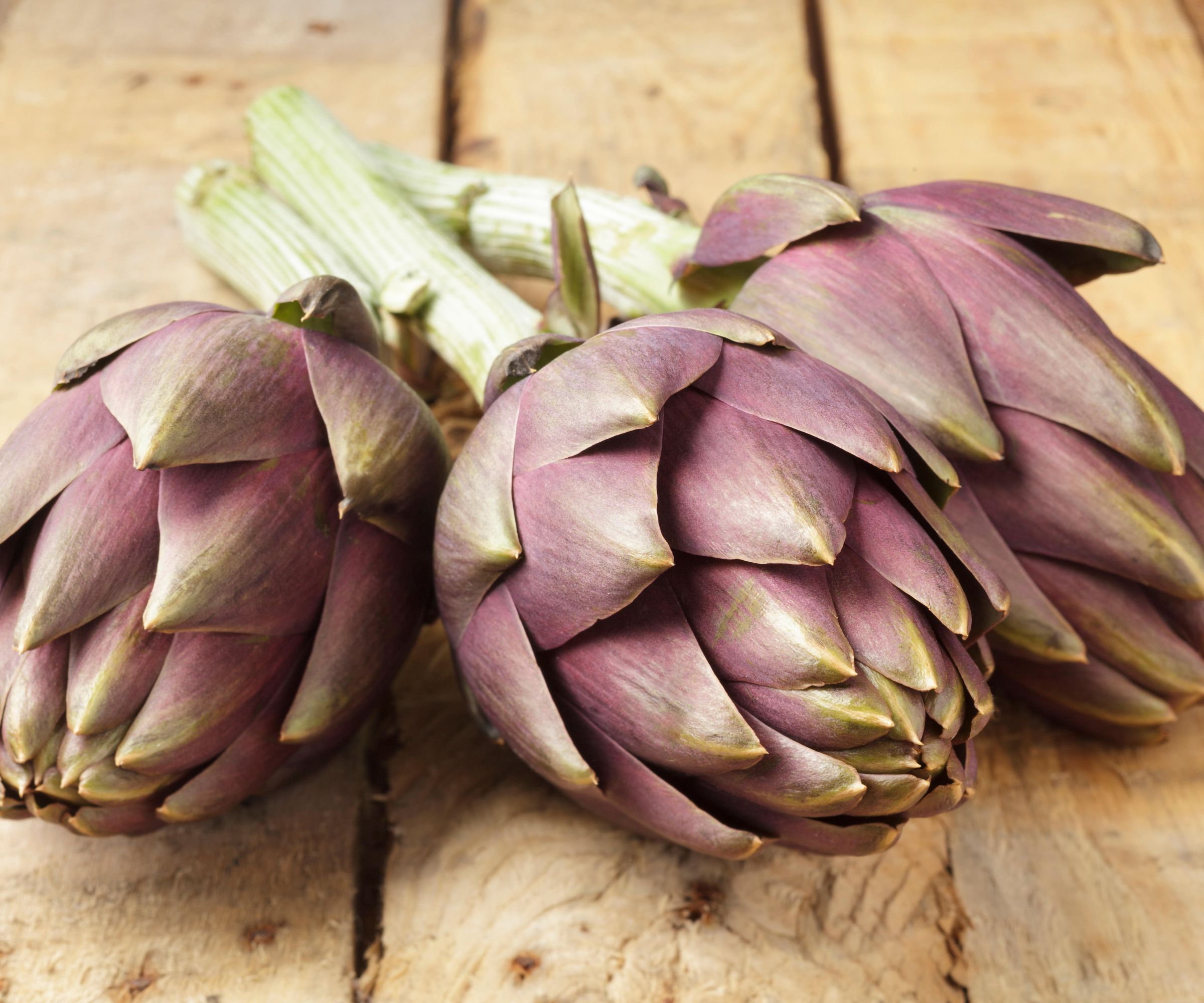
Artichoke flower buds need to be harvested at the right time
Artichokes are in season during the summer months from late June to August, depending on your location. You want to get to the artichokes to harvest at the right time, before the bud starts to open, and cut them from the plant with a pair of sharp pruning shears.
‘You want to harvest artichokes once they reach a nice golf-ball size, but before their buds begin to open and form flowers,’ says Diane Kuthy. ‘I like to wait until the bottom leaves of the buds start to pull away from the tight ball just a tiny bit before harvesting.
‘The other option is to not harvest your artichokes. While that may sound crazy, artichokes produce some of the most beautiful flowers if you allow their buds to fully ripen. You can have the best of both worlds by harvesting some artichoke buds for eating and leaving some on the plant to flower.’
After the harvesting period ends, cut down all the old flower stalks to just a few inches above the ground. Mulching around the plant can be beneficial to protect the plant’s roots from winter cold.
How to grow artichokes in pots
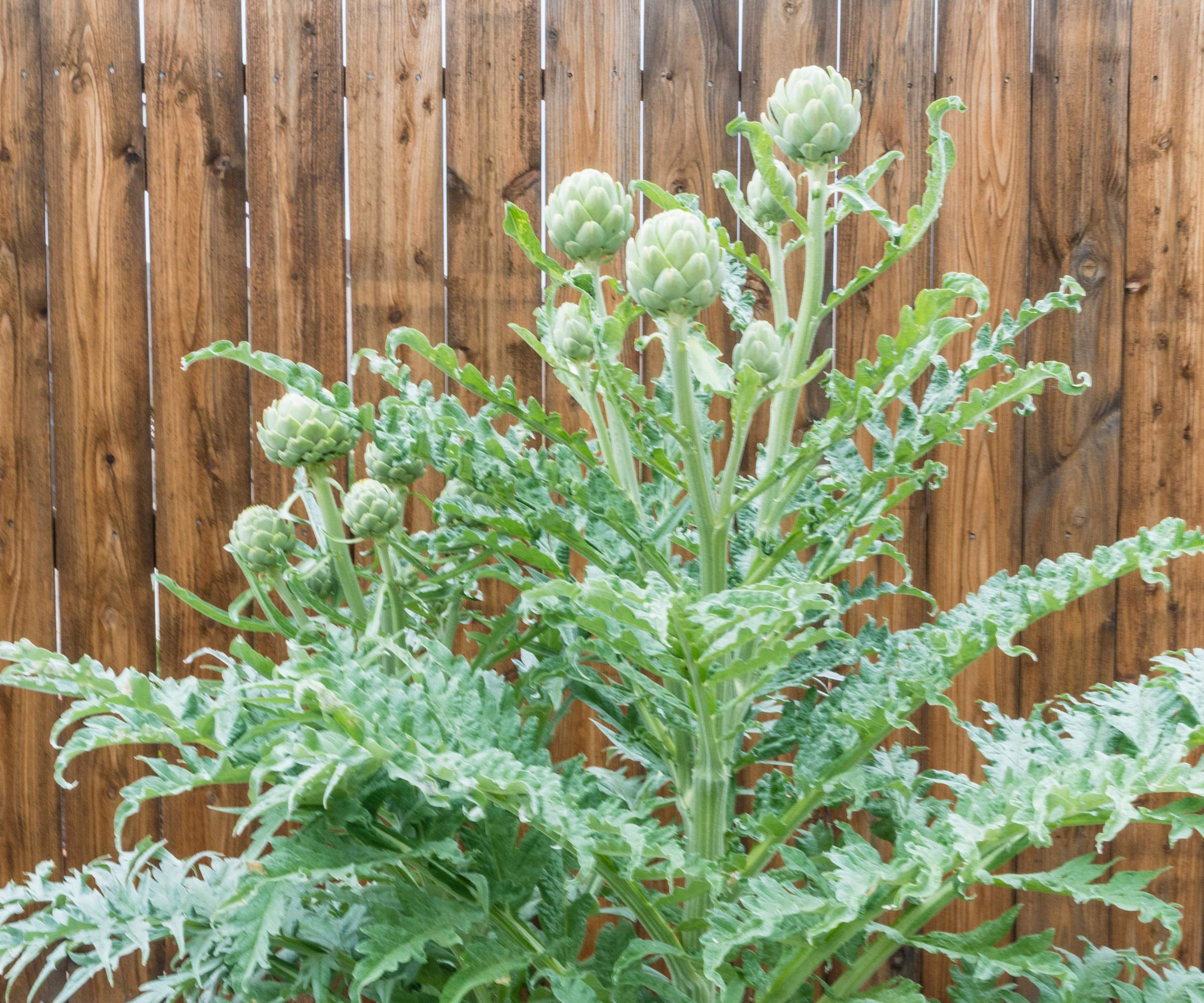
Artichokes are tall and wide-spreading plants
As artichokes are such large plants, you may wonder, can you grow artichokes in a pot? Well the answer is yes, you can grow artichokes in a container - but it will need to be a large pot to contain the bulky plant and its large root system.
If you do want to add artichokes to your vegetable container garden, then use a 5 or 10 gallon container, or old barrel, and fill it with a good well-draining potting mix supplemented with compost or well-rotted manure.
Watering will be a regular necessity as containers will dry out quicker in pots, and plants will need regular feeding with a liquid fertilizer - around once a month during the growing season.
Artichokes in pots can be overwintered by being cut down after harvesting and covered in a mulch of straw or leaves. Move the pot to a protected position and then remove the mulch again come spring when the pot is moved back outside into a sunny spot.
FAQs
How long do artichokes take to grow?
Artichokes need 80-110 days to fully mature and go from planting outdoors to producing flowers. They are slow-growing plants, but when grown as a perennial can produce a good harvest for up to six years. You can dig up older artichokes and divide plants to get a fresh batch of new plants.
How many artichokes do you get from one plant?
It can vary depending on the variety of artichoke you are growing, and also outside factors during the growing season such as the weather and pests, but an artichoke plant can produce up to 10 artichokes per year.
Do artichokes need staking?
Artichoke plants grow up to six feet in height, but are often robust enough plants to not require staking to keep them upright - if they are growing in a protected position. If you are growing artichokes in a windy climate, or in a more open garden, they may benefit from being supported by a couple of sturdy stakes.
Globe artichokes are not to be confused with Jerusalem artichokes or Chinese artichokes. They are very different plants in terms of how they grow and how they are harvested. Globe artichokes are grown for the buds, while the other two are grown for their underground tubers.

Drew has worked as a writer since 2008 and was also a professional gardener for many years. As a trained horticulturist, he worked in prestigious historic gardens, including Hanbury Hall and the world-famous Hidcote Manor Garden. He also spent time as a specialist kitchen gardener at Soho Farmhouse and Netherby Hall, where he grew vegetables, fruit, herbs, and cut flowers for restaurants. Drew has written for numerous print and online publications and is an allotment holder and garden blogger. He is shortlisted for the Digital Gardening Writer of the Year at the 2025 Garden Media Guild Awards.
